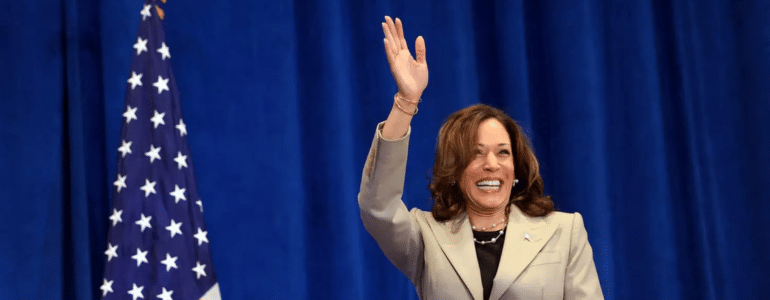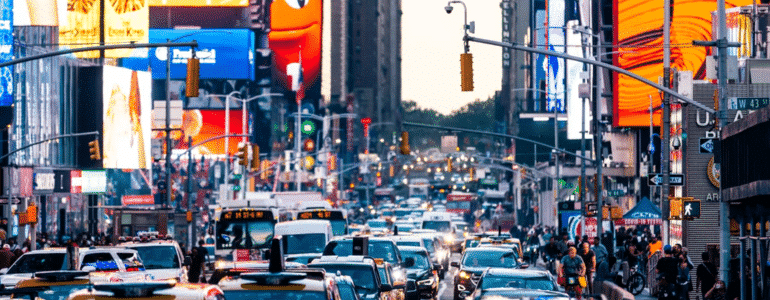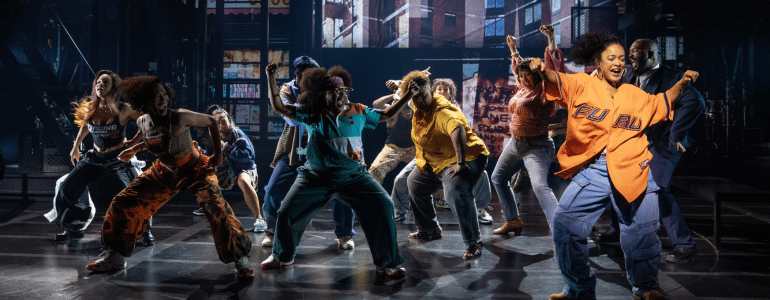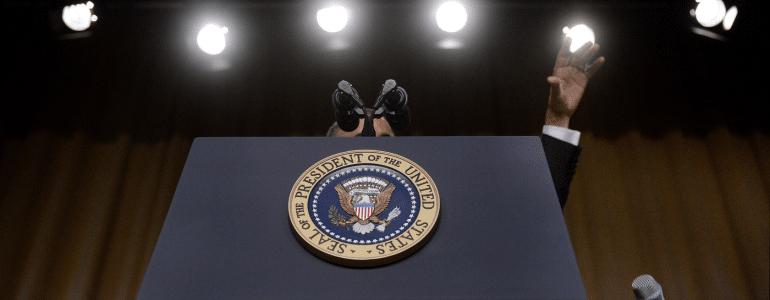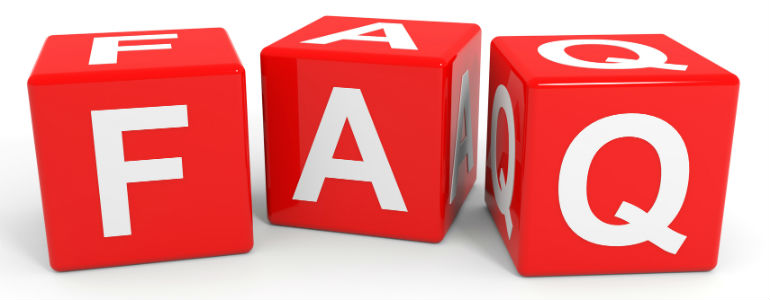BY THE NUMBERS: Is it the show itself or awards shows in general?
The Tony Awards telecast took some shots from the press this year, many of which I still can’t understand. I enjoyed the show, as I wrote about here, and most theatergoers I spoke to did as well, including you.
The most quantifiable piece of criticism was (on the surface) the ratings. “Viewership 10% down,” headlines screamed. “Will CBS drop the show?” articles asked, like teenagers gossiping about whether or not the most popular couple in school would break up.
And most came to the conclusion that if the show was, ahem, better, viewership would go up.
That’s where I disagree.
First, I’m not surprised that viewership was down. In fact, I’d postulate that if Hamilton opened this year, the Tony Awards would have had fewer viewers than it did when Hamilton was the focal point 3 years ago.
That’s because the way people consume entertainment is different.
In 2015, when Hamilton opened, millennials especially were ditching TV screens (and the live viewing that goes with it) at an alarming rate, causing a drop of 10.6% that year.
So, while it’s easy to point to the content as the problem, ratings are no Occam’s razor . . . the simplest answer is not always the right one.
And I think there’s another reason the ratings fell . . . and it’s not the Tony Awards show that’s the issue, it’s all awards shows.
I went to the numbers and looked at the ratings for the three major Awards shows since 2010.
Here they are . . .
| Year | Viewers (Millions) | ||
| Tony Awards | Grammys |
Oscars |
|
| 2010 | 7.59 | 26.60 | 41.62 |
| 2011 | 8.39 | 26.55 | 37.90 |
| 2012 | 6.01 | 39.91 | 39.46 |
| 2013 | 7.24 | 28.37 | 40.38 |
| 2014 | 7.02 | 28.51 | 43.74 |
| 2015 | 6.46 | 25.30 | 37.26 |
| 2016 | 8.73 | 24.95 | 34.43 |
| 2017 | 6.00 | 26.05 | 32.94 |
| 2018 | 6.32 | 19.80 | 26.50 |
| 2019 | 5.47 | 19.90 | 29.60 |
And here they are in a graph, which paints the picture even more clearly:
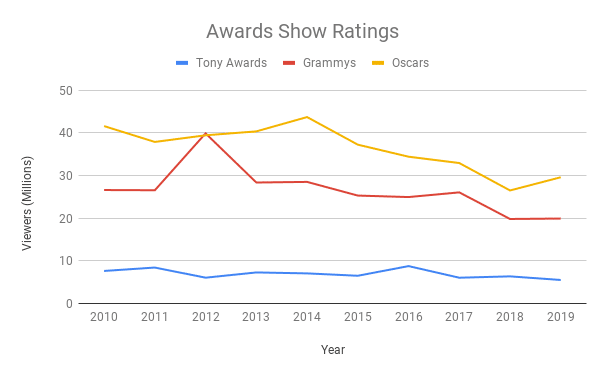
As you can see . . . it ain’t just us. So folks should stop pointing the finger at the production of the telecast and actually look at the ground that’s changing under our feet as we tap dance.
And those other awards shows are losing viewers at an even greater rate than we are (partly due to the many more millennials in their primary demographic).
It also just may be that awards aren’t as important to audiences anymore. Or that the audiences know that these telecasts are more about marketing than anything. Or that some of them (I’m talking to you, Hollywood) don’t represent the diverse field of the medium. Or they are so filled with scandal (you again, Hollywood) that people are turning them off.
Or maybe our viewers are watching, just later, on their own schedule, instead of live.
Or maybe, just maybe, people want instant information (duh) and want to find out who won, but just want to see it in their social media feed later, rather than sit through three hours of commercials and stuff.
The way people view TV and movies has shifted and will continue to do so. So, of course, the number of viewers of our awards show is going to go down.
Luckily for us, as compared to our sister industries, a screen is not where our primary content is consumed. 🙂
That’s why while viewership of the Tonys may be 10% down, our attendance in our actual theaters (where it really matters) is 10% up.
– – – – – –
What will Broadway look like next season? Get my predictions and forecast for next year in next week’s blog. Sign up here to make sure you don’t miss it.
Podcasting
Ken created one of the first Broadway podcasts, recording over 250 episodes over 7 years. It features interviews with A-listers in the theater about how they “made it”, including 2 Pulitzer Prize Winners, 7 Academy Award Winners and 76 Tony Award winners. Notable guests include Pasek & Paul, Kenny Leon, Lynn Ahrens and more.







